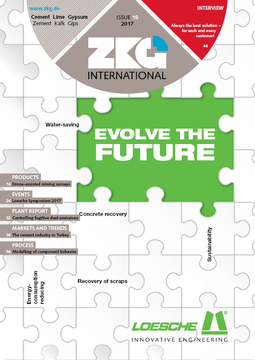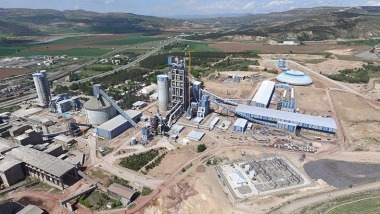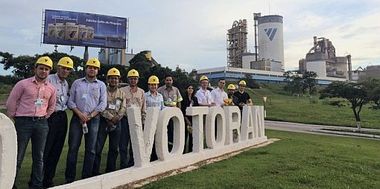Industry of
the future
Aware of its responsibility to minimize the impacts of its production process, the cement industry signed an agreement during COP 21 (Paris December 2015), which includes a commitment to reduce carbon emissions by 20 % to 25 % by 2030.
Votorantim Cimentos, in particular, aims to reduce CO2 emissions per ton of cement by 25 % by 2020 (compared to 1990 levels). This goal is supported by four main drivers: supply of eco-efficient products; replacement of fossil fuels with alternative fuels and biomass in the generation of thermal energy; research and development aiming at finding alternative raw materials and raw materials with less CO2 footprint for cement production; and investments in energy efficiency and implementation of carbon capture and sequestration projects.
Attested products
In mid-2016, as a result of an initiative still new to this industry, Votorantim Cimentos obtained, through the international Environmental Product Declarations system, environmental declarations for five products of its portfolio in Brazil – three types of cement, one type of ready-mix and one type of mortar.
The possibility of evaluating the environmental impacts of the products throughout their entire life cycle, from the extraction of raw materials to their final destination, with the endorsement of a third party, results in certifications that guarantee transparency to the market. This first step, which also placed the company in a pioneering position in obtaining the declarations in this sector in Brazil, is part of a long way still to be travelled in order to guarantee more eco-efficiency in the products that are offered to the market.
Co-processing as an alternative
As part of its sustainable practices, which is one of the company’s four strategic pillars, Votorantim Cimentos created in 2015 a new business to look for alternative fuels and raw materials to be used as a source for thermal energy to cement production process. Through a massive investment portfolio, together with a detailed long-term business plan, the company is taking rapid steps towards higher thermal substitution rates, enabling the use of several types of wastes and by-products of other companies, reinforcing the approach of circular economy.
To illustrate the importance of this practice, the volume that was co-processed in 2016 was enough to reduce CO2 emission by 213000 t, an amount equivalent to that emitted by a truck when driving 1700 times around the Earth.
When compared to other alternatives for waste disposal, co-processing is certainly the most cost-effective option, considering the environmental and social aspects related to waste management. Moreover, although it is a very advanced technology, which allows companies to replace up to 60 % of the fossil fuels they use, co-processing is still an underutilized process in Brazil.
Black mud
When it comes to seeking alternative raw materials for the production process, innovation and sustainability need to go hand in hand. A good example is a recently awarded case study in Brazil.
Black mud – or Caron tailings – is a residue from the nickel processing business. In Niquelândia (Goiás), Companhia Brasileira de Alumínio – a company that like Votorantim Cimentos is part of the portfolio of Votorantim S.A. – generated an important amount of black mud residue, stored in the Jacuba dam. When analyzed, this residue was found to meet, in natura, hydraulic properties allowing it to be considered a natural pozzolan, which means it could be used as an additive to cement and, therefore, could partially replace clinker. From an environmental point of view, the use of black mud reduces clinker in cement, in addition to providing a use for a residue disposed in tailing ponds. In terms of product, the addition of pozzolan resulted in a type of cement that is suitable for use where high durability is required.
Algae for carbon capture
and sequestration
St. Marys Cement, a Votorantim Cement company in North America, is leading a project that is still embryonic but already shows potential in the management of industrial carbon emissions.
A partnership with the National Research Council of Canada’s (NRC) Algal Carbon Conversion (ACC) program and Pond Technologies resulted in a demonstration project of an algae biorefinery to recycle CO2 and other industrial emissions, rapidly transforming them into biomass by means of photosynthesis, using a 25000 liter photo-bioreactor.
The industry of the future is therefore one that seeks sustainable solutions for the planet, for today’s society and for the generations to come. Cement will continue to be an essential raw material for urbanization. For this reason, Votorantim Cimentos operates with a long-term vision, prioritizing increasingly clean processes and environmentally responsible products.
//www.votorantimcimentos.com" target="_blank" >www.votorantimcimentos.com:www.votorantimcimentos.com



